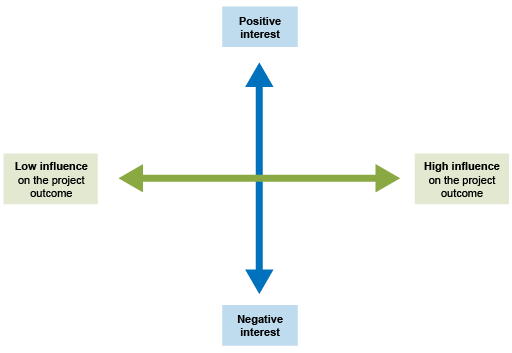Identifying and engaging stakeholders – stakeholder analysis
A stakeholder is a person who has a vested interest in the outcome of your project. In other words, anyone affected by or anyone with influence on what you do.
There are many ways of identifying and categorising stakeholders, and what we present here is the approach we used. This is also a summary of what we did, and a longer explanation is given in the section on Dialogue with stakeholders in the AgriLink Living Lab Toolbox [Tip: hold Ctrl and click a link to open it in a new tab. (Hide tip)] . If you are more deeply interested in stakeholding in agriculture then there is an even longer document Influence without Power: Stakeholder Management in Practice from an Agrilink partner, Wageningen University and Research.
First, we considered what is the most effective way of involving stakeholders and came up with four ways. There are many symptoms of disastrous meetings and they can be described in different ways, but our list of symptoms was:
Consult – ask for views, ideas, etc. |
Inform – present activities and results |
Involve – take part in the project |
Ownership – it becomes their project. |
Second, we thought about how stakeholders might behave and from the literature identified three main types – blockers, movers and floaters. There are many symptoms of disastrous meetings, and they can be described in different ways, but our list of symptoms was:
Blockers would oppose the interests of the Living Lab and have good reasons not to change as they will have other priorities. There are two types: open and covert blockers. |
Movers interests would correspond to the intended changes being investigated and be in favour of it. |
Floaters would have no clear interest in the change and would wait to see what happens and join with either the movers or blockers. |
The strategy we devised to engage with stakeholders had the following elements:
Find out the interests of the stakeholder that explains their position. |
Inform them about the Living Lab proposal and find out their position and interests. |
This could change over time:
|
Make coalitions with the movers. |
Confront blockers with your success supported by movers. |
Seduce and convince floaters. |
One way to evaluate the potential impact of stakeholders on the Living Lab is to use a matrix of interest versus influence as shown in Figure 5.2 (a more practical version to use is in the Toolbox).
Remember that influence is not necessarily about money or power but about commitment to the Living Lab in both the short and the long term. And interests can be positive, negative or even indifferent. The challenge is to create movement and momentum within stakeholders such that you increase the positive interests and reduce the negative interests.
Another way to capture your evaluation of stakeholders is to set out their interest and type of behaviour along with how you plan to handle them in a table like that shown in Table 5.1. Of course, that is not the only things you will have to plan.
Table 5.1 Example planning table for managing stakeholders
Stakeholder Name Organisation | Interest | Blocker Floater | Your strategy | |
|---|---|---|---|---|
| 1 | ||||
| 2 | ||||
| 3 | ||||
| 4 | ||||
| 5 | ||||
| 6 | ||||
| 7 | ||||
| 8 | ||||
| 9 | ||||
| 10 | ||||
| 11 | ||||
| 12 | ||||
| 13 | ||||
| 14 | ||||
| 15 | ||||
| 16 | ||||
| 17 | ||||
| 18 |
We will discuss our experiences with engaging stakeholders in more detail in Session 7 on Dos and Don’ts.
What is facilitation?

